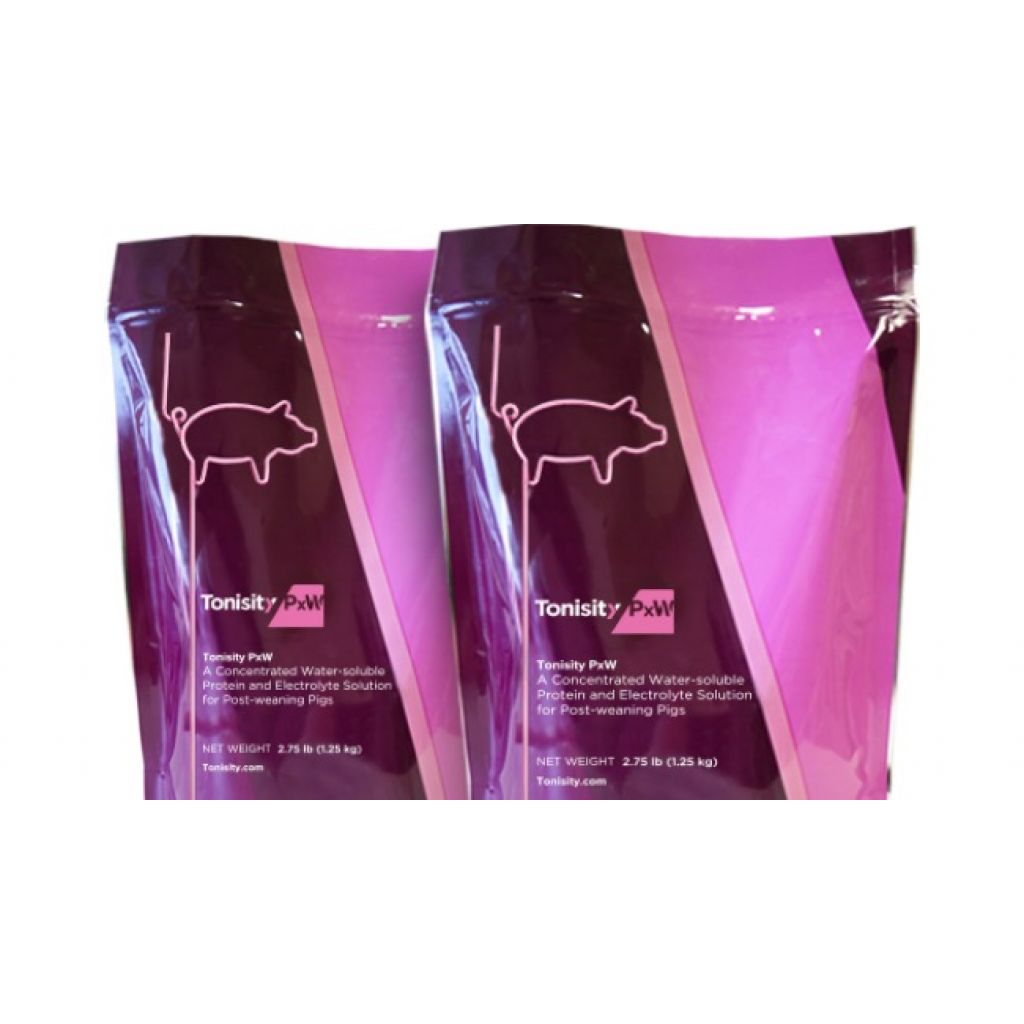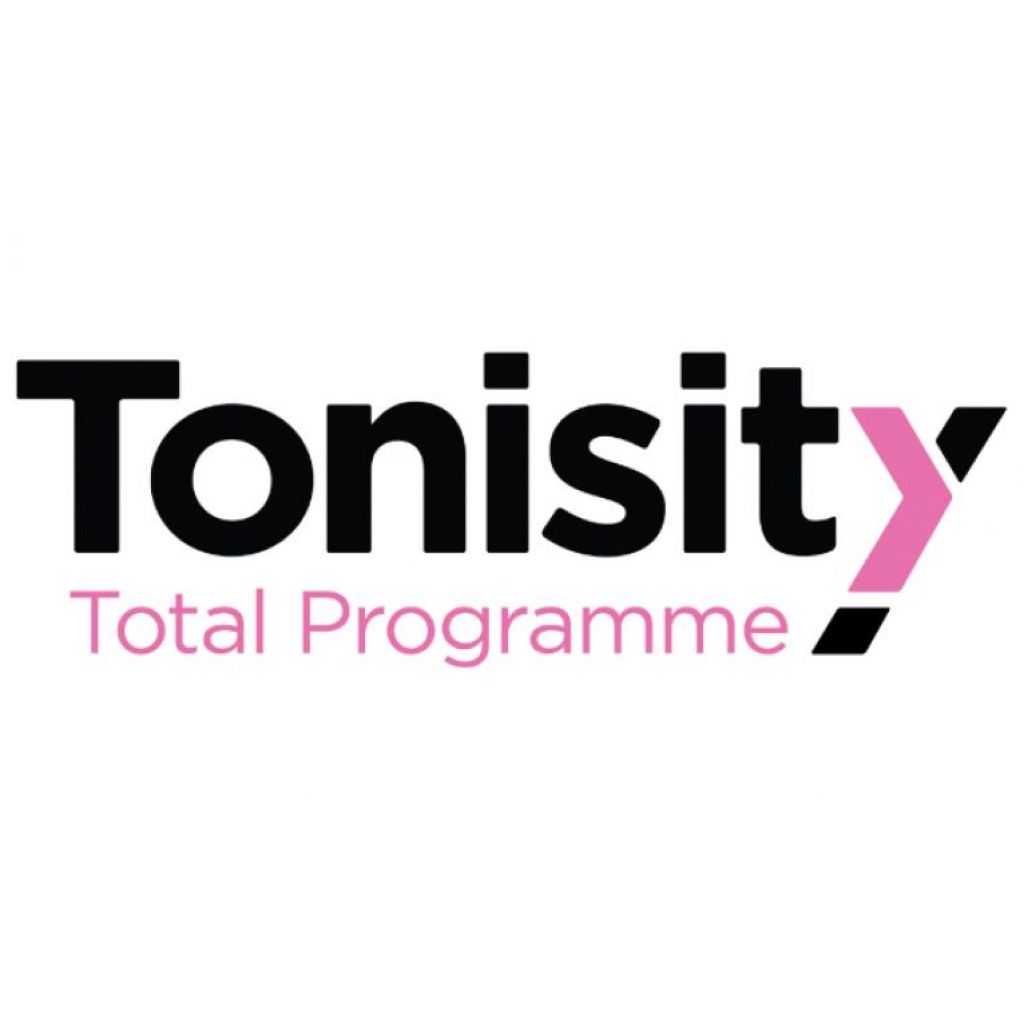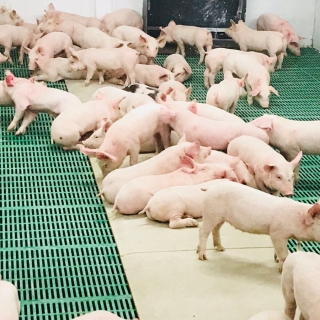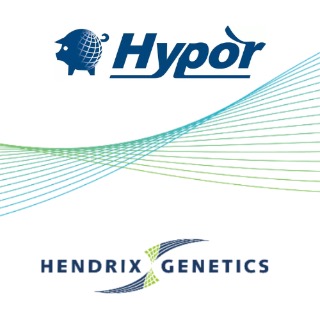Pre-weaning mortality and farrowing management in Asia
Pre-weaning piglet mortality (PWM) is one of the primary challenges in the global pig industry. The introduction of hyper-prolific sow breeds has led to increased numbers of piglets born alive and weaned. However, simultaneously, PWM has been on the rise, ranging between 10% and 20% in major pig-producing countries. INTERPIG reports that PWM is 13.8% in Europe (15.2 pigs born alive) and 15.8% in the USA (13.9 pigs born alive), signifying an average loss of two piglets per litter during the lactation period. Tonisity’s own data on close to 100,000 pigs (91 studies in 23 countries) shows an average PWM of 10.7% for a litter size of 12.2 pigs. In Europe only, the PWM recorded in 41 different studies (31,265 pigs) is also 10.7%; it is 12.5% in USA (43,719 pigs in 21 different studies).
Like everywhere else, litter size has been increasing in the recent years in Asia, and the trend for larger litters is often resulting in higher PWM. Also, one of the challenges for swine producers in Asia, and especially in the tropics, is being able to maintain the sows’ feed intake during lactation and counteracting the negative effects of heat stress. Milk production by the sow is affected, which increases the risk of piglets’ mortality.
Since we could not find official data, and just a few studies about PWM in Asia, the aim of this article is to give insights on the current situation in several Asian countries, and how producers are trying to reduce this mortality. The information we discuss thereafter is mostly based on experience shared by technical experts, as well as some published or unpublished data.
China
With about 50% of the global production, China is by far the largest swine market in the world. Overall, the number of born alive varies widely but 11-12 is quite normal and good farms achieve 12 to 14. But nowadays, it is not unusual for some farms to have more than 15 pigs/litter.
According to Tonisity’s trial data, the PWM in China is usually ranging from 4 to 6% but that is after culling of the smaller pigs (less than 0.8 kg) at birth, a common practice in several Asian countries. In one of our trials, no culling was done and the PWM observed was 12.6% (with 11.8 piglets born alive). We can estimate that the total PWM is generally above 10% all year around (from 11 to 18%), but this includes the piglets that are culled at birth. One of the reasons for culling is that the number of weak pigs at weaning is one of the criteria used to evaluate the workers' performance. Since approximately 4 to 5% of piglets born are considered not viable and culled, the reported PWM is usually around 5 to 7%.
Creep feed is usually given from days 8-10 until weaning at 21-24 days. Milk replacers are not commonly used except in smaller pigs (starting from day three). Before weaning, the staff try to teach weak pigs to drink milk and can supply specific drug treatments, but those piglets could be euthanised if they are too weak, or fostered to different sows. The routine practice of fostering weak pigs is done at about seven days and again at 14 days of age. Then these weak pigs are weaned together with the normal pigs, but will be grouped separately in nursery. Besides the nursery diet, weak pigs are usually fed with additional porridge to provide extra nutrients.
Taiwan
The director of the Livestock Research Institute under the Council of Agriculture, Dr. Huang Zhenfang, pointed out that the mortality rate for pigs in Taiwan is ranging from 15% to 40% and that the majority of deaths occur during the suckling and nursery stages. However, Taiwan does not have official data on pre-weaning mortality rates for pigs. Based on our field experience, the pre-weaning mortality rate is usually ranging from 15% to 20%.
The issue is that most of the units, especially smaller farms, often do not maintain detailed numerical records throughout the pig production process. This could be due to a lack of manpower or a belief that statistical tracking may not be necessary. However, in recent times, there has been a rapid decline in small-scale farming, with an increase in corporate farming operations. Corporate farming entities are more inclined to record and analyse data to enhance pig farming efficiency.
Some farms may opt to cull pigs that are born too weak or small. The standards for culling may vary between farms or rely on the judgment of on-site staff. Based on their experience, these small pigs tend to have high mortality rates, and the cost of raising them is comparatively high. During the nursery stage, "sick pigs" or "weak pigs" are typically segregated into a separate pen for easier management and observation and to facilitate care and prevent disease spreading. Some farms administer electrolytes, milk replacers, or use water-based medications (e.g., antibiotics). Occasionally, additional injections may be provided for sick or weak pigs as well.
In Taiwan, we estimate that approximately half of the farms use milk replacer and creep feeding, typically starting around one week after birth. However, some believe in allowing the sows to raise their piglets without relying on additional nutrition, so they focus on adjusting the sow's feed formula and piglet management during in the farrowing house.
Thailand
Nuntapaitoon et al (2018) reported that the PWM among 47 commercial swine herds in Thailand was 11.2% and varied from 4.8% to 19.2%. As expected, PWM increased with increasing litter size, which was also correlated with a higher number of piglets with low birth weights (0.8 - 1.3 kg). In 10 different trials organized by Tonisity, the recorded PWM was between 7.3 and 18.5%.
Based on our discussions, we can say that currently the PWM is around 15%, for a litter size of 14 piglets. A higher mortality rate is observed for piglets of low birthweight (less than 1.2 kg) and for that reason, depending on market conditions, some producers will cull those piglets presenting a higher risk of PWM.
Giving creep fed is a common practice but use of milk replacers is not popular. They are mostly given in specific cases, for instances when sows have low milk production, mostly because of health issues, or sometimes to litters from first parity sows.
To mitigate pre-weaning mortality, farm staff employ specific solutions, such as energy boosters. They will also use additives to encourage creep feed intake. However, for cost reasons, and if the main cause of the problem is microbial, some farmers prefer using antibiotics (oral route or injected) before considering other products. In integrated and large companies (3 companies are representing about 70% of the total production) specific care and management programs are used for smaller and weaker pigs.
The Philippines
In The Philippines, piglets are usually classified based on their birth weight. Class A piglets are above 1.5 kg, class B are between 0.8 and 1.5 kg, and class C piglets are lighter than 0.7kg. The goal is for Class A and B combined to constitute at least 85% of the population. The number of piglets born alive ranges from 9 to 12 in most cases and a typical PWM would be around 5-8%, and in problematic cases it would be higher. Culling of small piglets is done as soon as possible and recorded separately, representing an extra 3% mortality; however, most farms try saving those smaller piglets. During cross fostering, sometimes, underweights are grouped and assigned to second or even first parity sows to take advantage of better milking potential and the right teat size.
Some farms are giving milk supplements for under weights or they extend their weaning age for an extra week. Creep feeding starts as early as 10-12 days old, and best results are achieved with wet feeding.
In order to reduce pre-weaning mortality, the first step is to determine what is the case, such as infection, management or facility issues, feeding or nutrition, or cleaning and disinfection. Corrective actions are then implemented, such as proper supervision (e.g. monitoring during farrowing to prevent stillbirth), pen structure improvement (to prevent crushing, minimize draft air, proper lighting/heating during farrowing), treating the sow with medications or vaccination (PRRS, parvo or bacterial infections) to prevent vertical disease transmission, piglet medication for enteric problems (coccidiosis, E. coli, clostridial infections). Proper sow nutrition and good hygiene and cleaning are other topics which are improved if necessary.
Vietnam
In Vietnam, the standard practice is that all piglets with a low birth weight (under 800 grams) are culled. Piglets between 800 g and 1200 g will receive special care. In 2018, Nguyen et al. published an analysis of the reproductive performance of a crossed pig line (GF24 sow) on 20,295 litters from 165 commercial farms. The pre-weaning mortality based on the number of piglets born alive (12.1 piglets/litter) was 13.2% while the mortality based on the “selected” piglets (11.2 piglets/litter) was 6.0%, in line with what we usually see in commercial operations (5 to 8%). The analysis of pre-weaning mortality based on the housing system (closed vs. open) showed that a higher percentage of piglets were lost in the closed system (15.4% vs. 12.8%, based on born alive) and this was related with larger litter sizes in the closed system.
To reduce the pre-weaning mortality rate, farms apply a combination of measures, such as cross fostering based on litter size and piglets’ weight, as well as the sow's lactation performance. They also use some antibiotics and adjuvants to prevent diseases and improve piglet resistance, as well as nutritional supplement in specific cases. Creep feed is used in almost every farm, from five days of age.
As for milk replacer, their use is also relatively common.
Summary of Asian situation
Globally, the continued trend for larger litter sizes has coincided with a rise in PWM. Producers in Asia have to deal with similar issues.
In China, PWM typically ranges from 4% to 6%, though practices such as culling smaller pigs at birth influence these figures. Taiwan faces a mortality rate between 15% and 20%, while Thailand reports PWM between 7% and 20%, correlating with increased litter size. In The Philippines, where a classification system based on birth weight is used, the PWM is around 5-8%. Vietnam, like other nations, grapples with low birth weight piglets, employing culling strategies and a combination of interventions to manage mortality.
Across these countries, commonalities in practices include the use of creep feed, limited reliance on milk replacers, and the occasional use of antibiotics. The challenge of maintaining sows' feed intake during lactation, coupled with the impact of heat stress, resonates across the region. Practices such as culling, fostering weak piglets and implementing specific care programs for smaller and weaker pigs are widespread.
In conclusion, the shared struggles in mitigating PWM underscore the need for collaborative research and knowledge-sharing within the Asian swine industry. Addressing these challenges demands a multifaceted approach encompassing nutritional strategies, health interventions and improvements in management practices. By collectively learning from these experiences, the swine industry in Asia can strive towards more effective solutions, ultimately enhancing piglet survival rates and ensuring sustainable growth in pig production.
Tonisity’s recommendations for piglet management in the farrowing house
Managing Sows and Piglets for Optimal Health and Survival
Effective sow and piglet management is crucial for ensuring future performance. By implementing sound nutritional practices, colostrum management strategies, and careful first-day piglet care, farm managers can significantly reduce piglet mortality and set the stage for a thriving swine population.
Nutrition at Farrowing:
To support a smooth farrowing process and enhance energy levels in sows, it's imperative to focus on their nutrition. Many sows may lack sufficient energy during farrowing, negatively impacting the process and its duration. Implementing an appropriate diet, ideally starting as late as two weeks pre-farrowing, can make a significant difference. Offering at least three daily meals in late gestation, with a fibre content of at least 500 g per day, aids in maximising energy levels. This high-fibre transition also reduces the risk of mastitis, metritis and agalactia (MMA) while helping alleviate constipation.
Maximising Feed Intake in Lactation:
Proper nutrition continues into the lactation period, where careful feeding practices are essential. From day one of birth, gradually increase feed amounts, reaching around 4 kg on day 5 and 8 kg on day 14 of lactation. To stimulate intake, try to split the daily ration in 3 to 4 feedings per day. Regularly check and clean feeders to prevent mould and train gilts to optimise their feeding habits. Adequate water availability is also critical.
Colostrum Management:
Colostrum plays a pivotal role in piglet immunity, and its effective management is vital. Ideally, piglets should remain with their maternal sow, but in practice, small piglets may be transferred to a 2nd or 3rd parity sow for easier suckling. Identify suitable sows for these transfers and employ split suckling for the first 2 days. In large litters, consider split suckling, assisted suckling, or hand-feeding colostrum to ensure proper intake. At the end of the day or when litters finish farrowing, establish litters. Do not move piglets once they have established their teat order.
First Day Piglet Care:
Initiate first-day care by placing piglets in a box before the initial feeding of the sow. When the sow has finished eating and is lying down, release the 10 smallest piglets or those with a wet umbilical cord, allowing them at least 1 hour for colostrum intake. Subsequently, release all piglets and perform litter equalising when all have had colostrum and possess a dry umbilical cord. Minimise movements, as a piglet's own mother is best for ensuring high immunity. Count functional teats and ensure you have the appropriate amount of piglets under the sow. Timely movement of hungry piglets is crucial.
First Week of Life:
To ensure proper gut development and reduce mortality, apply Tonisity Px in all litters (500 ml per litter per day, from days 2-8 of life).
References:
Huang, Zhenfang, 2023. Prospects and education for pig breeding industry in 2023 - Success rate improvement strategy. Presentation from the Taiwan Research Livestock Institute.
InterPIG Consortium. Interpig pig performance report 2023.
Nguyen Tien Thanh, Randolph Reinecker Zoerb and Do Vo Anh Khoa, 2018. Reproductive Performance of a New GF24 Female Gilt Line Reared under Different Conditions in Vietnam. Asian Journal of Animal Sciences, 12: 23-29.
Nuntapaitoon, M.; Tummaruk, P. Factors influencing piglet pre-weaning mortality in 47 commercial swine herds in Thailand. Trop. Anim. Health Prod. 2018, 50, 129–135.
Productos
Bienvenido a 3tres3
Conecta, comparte y relaciónate con la mayor comunidad de profesionales del sector porcino.
¡Ya somos 138357 Usuarios!
Regístrate¿Ya eres miembro?








